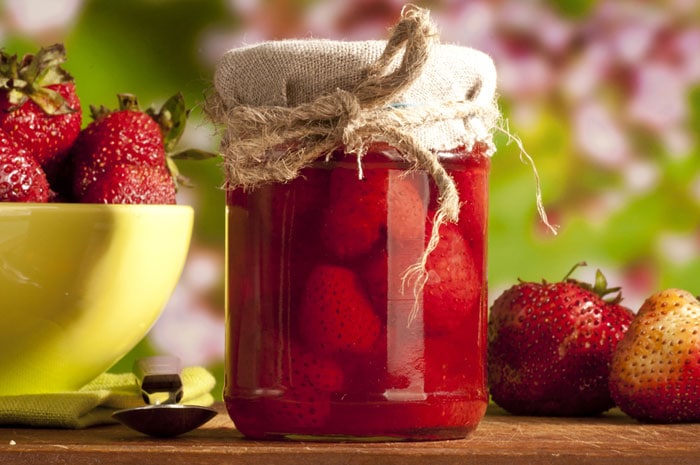
Written By: Sofia Layarda, MPH
Title: Master of Public Health
Alumni: University of California, Berkeley
Last Updated on:

If you have ever tried growing your own fruits or veggies, you will have experienced the overwhelming rush towards the end of the growing season when you seem to have too much of everything and want to save it all before it goes bad. What are some easy ideas for preserving or saving your harvest without resorting to home canning?

Which summer produce? Berries, grapes, peaches, nectarines, cherries, carrots, tomatoes, potatoes, squash
Many fruits and vegetables freeze well right off the vine or tree, or, in the case of tubers, straight out of the ground. Berries or grapes are great for this: simply harvest them, wash and dry, and then spread them out on a baking sheet in the freezer to freeze (this prevents them from clumping together). Once frozen, you can move them into a freezer-safe container. Other items on the list above also freeze well, but cut them into pieces before freezing so you can use them directly out of the freezer. For summer squash, either cut into pieces or grate.
How can you use the frozen product? Throw the frozen fruit pieces directly into smoothies, use them to top dessert, or use them in baking (either thawed or frozen). Frozen berries are very popular in my house as a refreshing, cool treat straight out of the freezer. Tomatoes and potatoes that have been frozen can be used in soups, casseroles, or stews. Grated squash or carrots can be added to burrito or taco filling, chili, soups, or stews, or used to top pizza. The bonus? Minimal prep time because you have pre-washed and pre-cut everything!
Note: Produce with a very high water content typically does not freeze well because the texture changes significantly upon thawing. Examples: cucumber, watermelon, lettuce, celery.
Which summer produce? Green beans, peas, beets, asparagus, cauliflower, broccoli, Brussels sprouts, dark leafy greens such as kale or spinach
Some vegetables store better in the freezer when they are blanched before freezing. Blanching can help stop certain enzymatic processes that change the texture and flavor of the vegetables as they are stored. To blanch vegetables, you need to have two main items prepared: a pot of boiling water on the stove, and an ice bath – basically a large bowl filled with water and plenty of ice. Have a colander handy, too. The vegetable you want to blanch should be cut into even-sized pieces so that the pieces can cook and freeze evenly. Simply toss them into the pot of boiling water, let cook for anywhere between one minute and five minutes, depending on type, and then quickly take them out and put them straight into the icy water to stop the cooking process. Drain, then freeze in ice cube trays or spread them on a baking sheet. Once completely frozen, you can put them into larger freezer-safe containers and only take out what you want to use. Generally, “sturdier” vegetables take more time than leafy ones. Peas or spinach, for example, only need about a minute in the boiling water, while something like green beans, cauliflower, or broccoli florets will need about three minutes of cooking before going into the ice bath. The best gauge is to taste the cooked vegetable – it should still have some crispness, and be not quite fully cooked.
How can you use these vegetables? They are great for adding to soups or making into gratin, fritata, or even mashed potatoes. Beets can be used in salads or salsa.
Which summer produce? Apples, pears, tomatoes, berries, peaches, apricots, cherries, plums, nectarines, figs
Fruits that get cooked into jam last longer than their fresh counterparts because the sugar in jam acts as a preservative that prevents bacterial growth. (Note that mold is not as dependent on moisture as bacteria and so can grow on jams that are left too long.) There are generally two approaches to jam making: The first involves cooking the fruit with pectin and sugar on the stove, while the second is a no-cook type (sometimes called freezer jam), where the fruit is usually crushed, mixed with sugar and pectin, and left to set. The cooked jam will typically have a longer shelf life, especially if it gets the full canning treatment that results in a vacuum seal. The freezer jam will last for about three weeks stored in the refrigerator or eight months if stored in the freezer. Here is an easy recipe for Mixed Berry Freezer Jam.
Fruit leather is made simply by pureeing fruits of your choice (ripe or slightly overripe fruits are best), adding a touch of sweetener such as honey, then spreading the puree thinly over a baking sheet lined with Silpat or parchment paper. Let the puree dry in a low oven for a few hours. Here is a simple recipe for Peach Fruit Leather.
Which summer produce? Cucumbers, cauliflower, beets, radishes, carrots, asparagus, green beans, onions, garlic, peppers
What do you need to pickle? Think acid, salt, and some flavorings such as herbs. You can also find ready-to-use pickling mix at the store. Similar to jams and jellies, pickles that are canned will store longer than no-cook pickles. Typically, the fruit or vegetable is pre-washed, cut into evenly sized pieces, and put into pre-sterilized jars. Next, the pickling mix (either room temperature or heated to near boiling, depending on type and recipe) is poured in to cover the pieces. Then the jar is sealed and processed to achieve a vacuum seal or simply put in the refrigerator. If you are new to pickling, try this easy recipe for No-Cook Cucumber Pickles.
Save the precious fruits of your labor and enjoy them throughout winter as a refreshing break from the winter produce rotation. Frozen fruits and vegetables are just as nutritious as their fresh counterparts, and preserving your produce saves you money and time down the line.
Alumni: University of California, Berkeley – Sofia believes in bringing back fun and pleasure into everyday eating. She loves cooking, and is constantly experimenting with ingredients, creating recipes and trying them out on family and friends. Her latest interest lies in finding realistic and practical ways of environmentally-friendly food/eating habits.
fruits, herbs, preserves, spices, summer, sustainable eating, vegetable gardening, vegetables